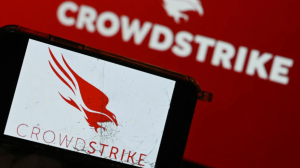The world is entering what many call the age of AI, where artificial intelligence is becoming integrated into more aspects of human life and society. Like with all new technologies, there is skepticism about whether AI will be able to significantly improve people’s lives or whether it will be a negative influence, causing many people to lose their jobs while others become overly reliant on technology.
One of the biggest fears about AI is that it kills off creativity, especially with issues of rampant art theft using AI. At its core, AI is the application of mathematics and statistics, which many say leaves no room for creativity. However, creative thinking will actually become even more in demand in the age of AI. More than 70% of global companies foresee creative thinking and analytical thinking as the most in-demand skills between 2023 and 2027.
According to Steve McKinney, Founder and President of Seoul-based executive search and coaching firm McKinney Consulting, this proves that human creativity is even more valuable in a world where uncreative machines are taking a larger role.
“This isn’t surprising, considering the complex challenges we face in every industry. From adapting to digital disruption to navigating global markets, creative solutions are key to staying ahead of the curve,” McKinney says.
Having been in the talent acquisition and leadership development industry for more than 20 years, McKinney has seen how leaders can effectively harness their creativity in their processes and problem-solving. Taking creative and unconventional approaches has resulted in greater innovation and strong, market-disrupting growth.
Before founding McKinney Consulting in 2001, McKinney managed the largest factory of an international athletic footwear brand and later global head of product development for another major footwear brand. These roles required not just management expertise but also creative thinking to develop new products in a highly competitive market.
“Creativity is indeed a powerful skill today, and even more so in the future. It is not limited just to traditional creative jobs, such as an architect, or an artist, or a videogame designer,” McKinney says. “Outside of the business world, I conduct music and I’m a classically trained singer. But I use the same creative thinking when I’m coaching executives. Like a musical piece, there’s a beginning, there’s a middle, and there’s an end. Cadence and timing are important, just like in music. There are many parallels, and professionals need to have the agility and adaptability to develop those creative ideas.”
In today’s multinational and multicultural world, it can sometimes be a challenge to encourage a culture of creativity due to cultural barriers. Based in South Korea, McKinney frequently works with executives heading the Asia-Pacific operations of some of the largest multinational corporations. He shares that many Western executives are struggling to reconcile the need for creative thinking with the more hierarchical and high-context cultures of Asian staff.
As a coach, McKinney helps clients navigate this situation in a way that’s respectful to everyone’s culture, creating harmony and goodwill in the workplace. Since the 1990s, the South Korean government has been taking steps to increase the focus on creative thinking in the school curriculum, and this has resulted in changes in working culture, especially among the younger generations, McKinney says.
Incorporating creative thinking, agility, and adaptability into one’s work also involves being a good listener to gain a genuine feel and understanding of the situation. When coaching, McKinney’s first instinct is to put himself in the client’s shoes and, from there, think of a creative solution to their problems. He seeks to learn their problems, as well as their abilities, to determine what they need to succeed. This is especially important today with multiple generations – from the Baby Boomers to Gen Z – sharing the workplace, with each generation having different experiences and familiarity with technology.
“I have always championed the power of creative thinking across my career,” McKinney says. “I’ve seen firsthand that canned approaches just don’t work. Yes, there needs to be a solid methodology or blueprint of processes and best practices, but you have to be creative, innovative, and able to introduce ideas and adjust. In the age of AI, creative thinking is what sets us humans apart from the programs and algorithms, and that’s why we can never be replaced.”









